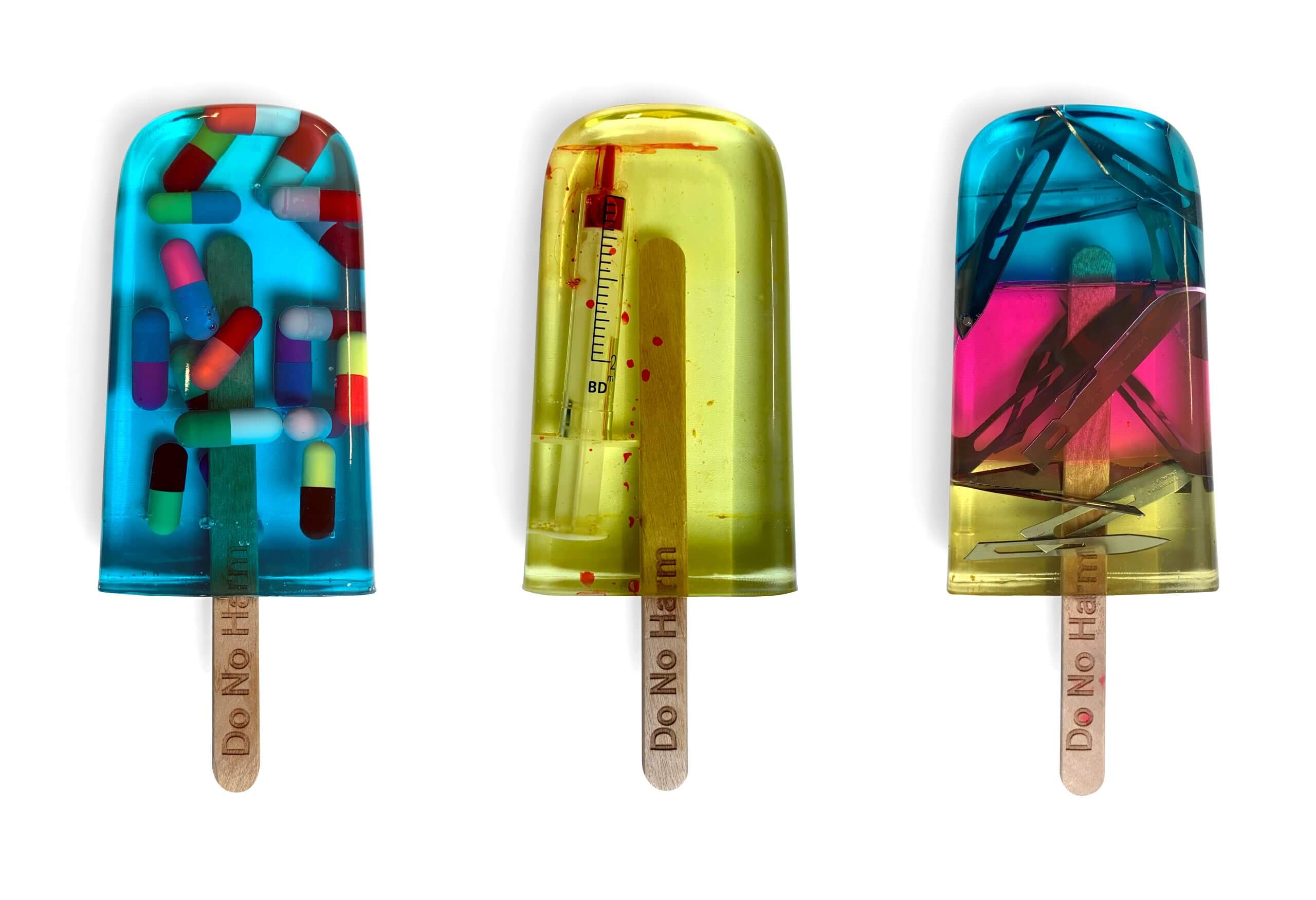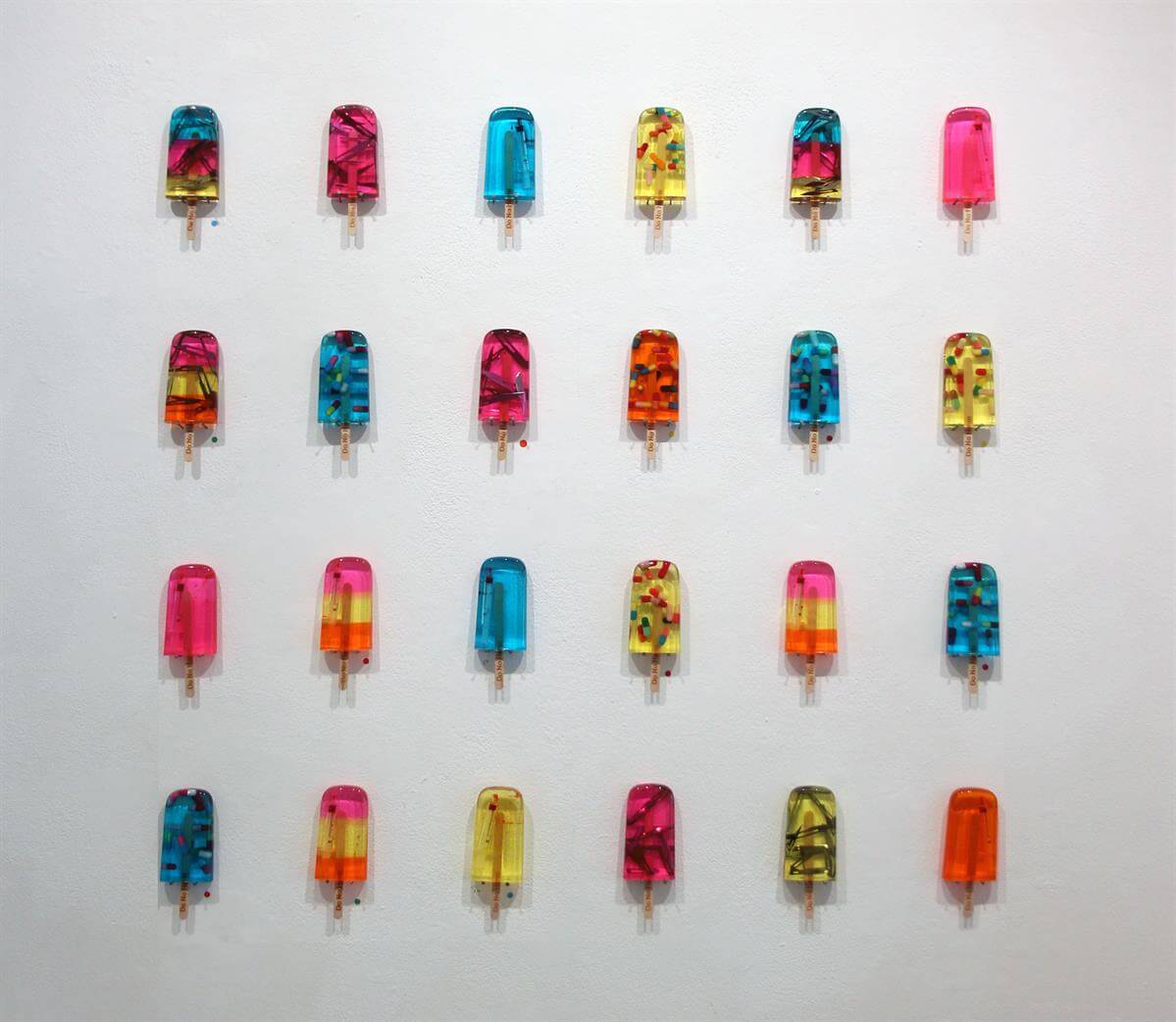FRONTRUNNER Meets Miss Bugs

In the age of social media, expressive vanity has become a mainstay of contemporary culture; from the more clever, subtle expressions of beauty and talent to the openly self-indulgent, glamourous selfies. Fame and fortune: the end goals of a never-ending game that has sucked many an individual into its addictive pull. It is this concept of social media’s darker underbelly that is the subject of a new artistic collaboration in London. The installation of nine-hundred brightly-colored “ice-lollies” is a stark contrast against the bright white of a gallery’s walls. The final image offering a critique of “contemporary society’s obsession and consumption of social media”. The artists, known as Miss Bugs, have chosen to keep their names out of the limelight. It is, they say, a conscious decision to remove their identity from that of their art.
Miss Bugs talks to FRONTRUNNER about the decision to keep a low profile, the inspiration behind their work and their most recent exhibition.

Do No Harm Series (2019)
Handmade resin ice lolly with encapsulated pills, syringes and razors
Dimensions variable
Courtesy of the artist and Jealous Gallery, London
Why is it that you have decided to keep your personal identities low profile, marketing yourselves solely off the Miss Bugs moniker?
We first started Miss Bugs in the early part of 2007, originally coming from a background in photography and graphics. Our low profile means viewers can’t project any assumptions on who we are and why we do what we do. As a result we are a neutral platform from which to express issues of contemporary society.
From where do you draw inspiration for your work?
We have always taken a broad and varied approach to creating work. The combining of materials and objects, alongside the way contemporary imagery can be collaged together, either by hand, through photography, or or using a digital process is important. We work in partnership. Through the years we have developed fast, spontaneous working methods, cutting and pasting existing images; ‘remixing and sampling classics’ in art to make new pieces with our own mark.
What are some common themes?
The focus of our work has always been the human form; as our interest lies in developing ‘characters’
to tell a story. We use archetypal imagery from magazines, art history and films as a starting point, which are then cut, overlaid and distorted to produce character portraits with an arresting graphic look.
Layering and placing of colour and pattern is also intrinsic to our work, and is very much a hands on element for us in the construction of the final pieces.
What are some of the more interesting mixed media materials you have worked with?
When we began we started with small scale works on paper, using screen printing with hand painted elements. We would then scale the work up, making life size cutouts of characters to place in-situ on the streets of London. These were left in place to become part of the cityscape and recorded through photography. Our most recent work includes larger scale pieces, incorporating laser cut planes of wood, hundreds of small component objects and poured resin. These pieces are time consuming and labour intensive, and a long way from the quickly constructed art pieces of the early days.
Talk us through your exhibition, Do No Harm, in London.
The ice lollies represent the churn of the social [media] network; the posed selfies, the frothy coffee top photos and the cute animal videos side of the internet that we all like to binge on, but inside it’s rotten and sick. Digital technology whilst being a sweetener in our lives perpetually distracts us with a constant, addictive stream of information and temptation. The internet becomes a space where reason and logic are trumped by fake news, and people with extremes of opinion can shout each other down. The candy on the outside sugar coats the sickness within.

Do No Harm Series (2019)
Handmade resin ice lolly with encapsulated pills, syringes and razors
Installation view
Courtesy of the artist and Jealous Gallery, London
How important is it for art to be reflective of contemporary society?
We feel that artists have a duty to reflect the zeitgeist [the unique spirit of the era], so we try to live up to that responsibility. Our art endures long after we’re gone, so it also becomes a time capsule for future generations.










